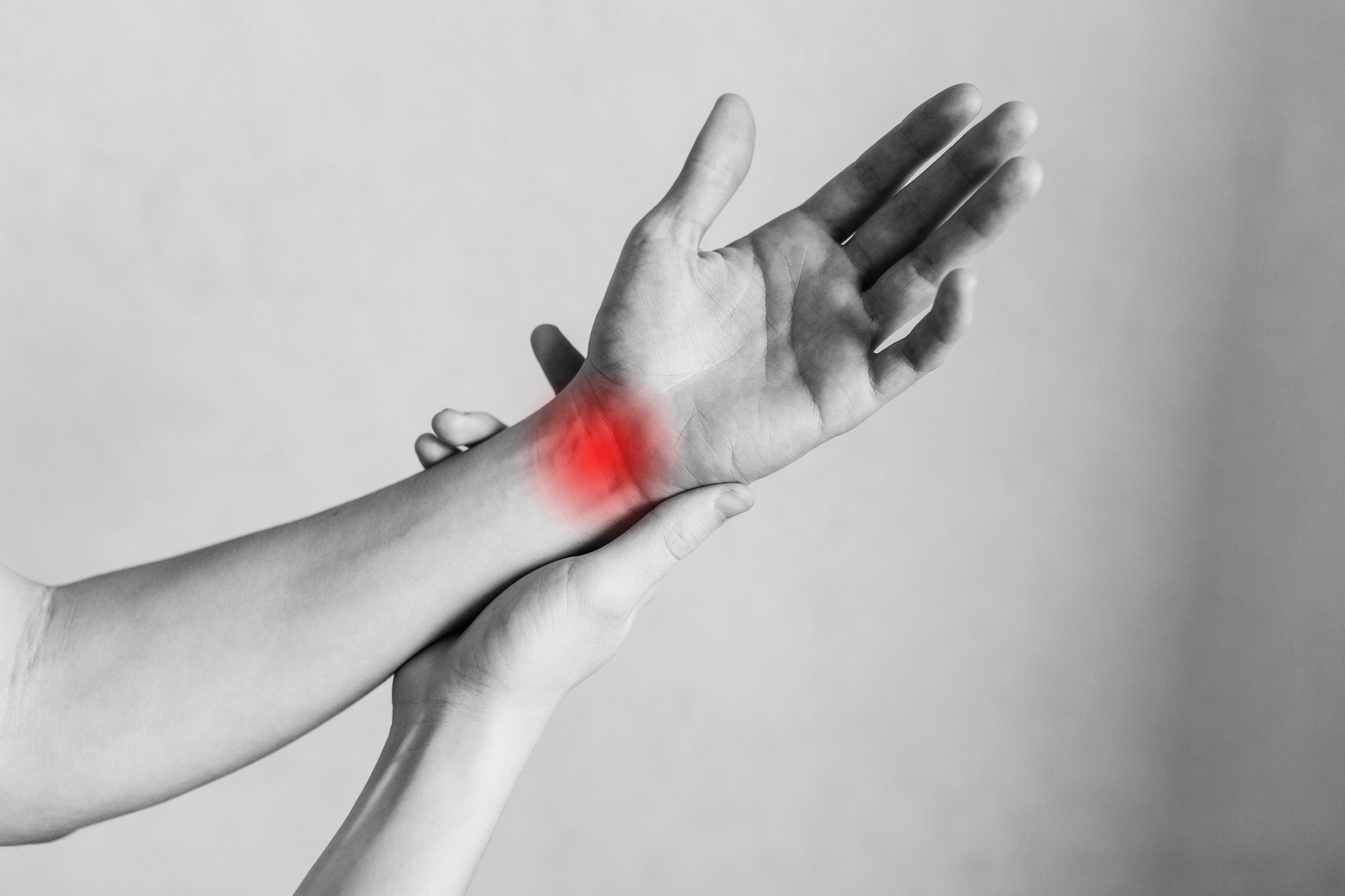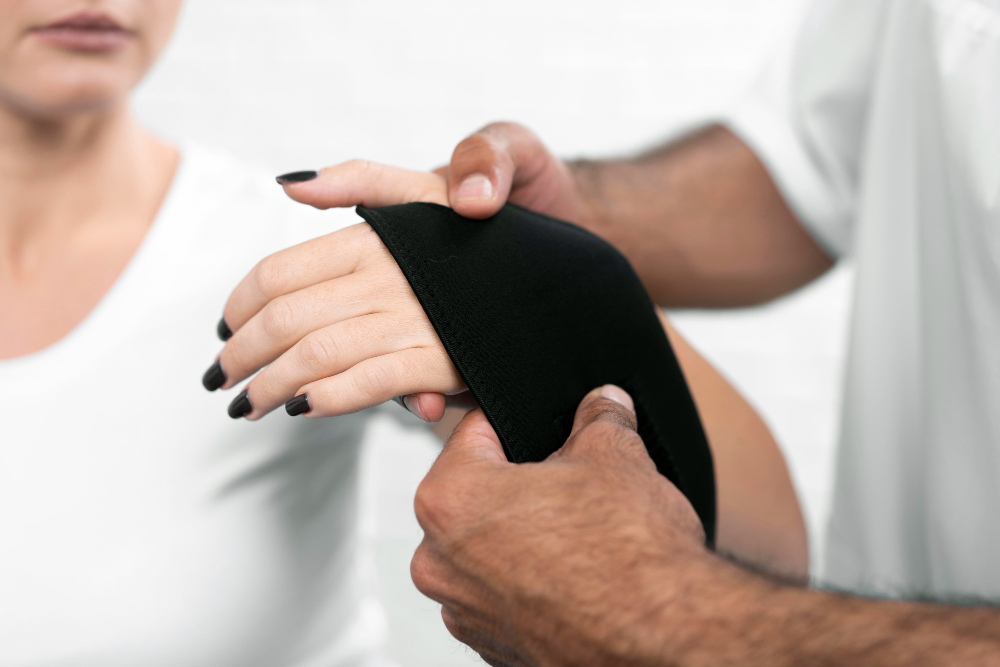Services

Symptoms
Wrist pain symptoms can vary depending on the cause. Some people may have pain that they describe as achy or dull; others may have pain that is sharp. The location of the pain can also vary. In addition to pain, other symptoms may develop. Symptoms of an injury, such as a wrist sprain, can include swelling and bruising. Numbness, tingling, and weakness of the hand might also occur when pain is due to carpal tunnel syndrome. Some people may develop the following symptoms:
- Stiffness - in the wrist and potentially the fingers.
- Trouble gripping objects - grasping or holding on may be difficult or uncomfortable.
- A clicking sound when moving the wrist - this can be more severe after periods of rest.
Depending on the cause, symptoms may be mild to start and become worse as time goes on. At first, pain may only occur during certain activities. In time, as the condition worsens, pain might occur even at rest. Numbness can also progress to the point where a person cannot feel cold or heat and may drop things.

Causes

Treatment for wrist pain depends on the cause of the pain and its severity. The least invasive treatment is given first before treatments are recommended. They include:
- Home treatment - often simply resting the wrist as much as possible to allow it time to heal is effective. Pain medication and ice may also be recommended to reduce inflammation and pain.
- Splints - in some cases, wearing a wrist splint can help. Splinting may prevent certain wrist movements that cause irritation. A splint might also reduce squeezing of the nerve.
- Exercises - depending on the type of pain, wrist exercises may work. Certain exercises can be prescribed to stretch and lengthen muscles and tendons. When it comes to which exercises to do, patients should get recommendations from a doctor or physical therapist.
- Additional treatment - cortisone injections, which decrease inflammation and reduce pain can be effective.
- Surgery - only used if less invasive treatments have not worked. The type of surgery performed depends on the cause of the pain. Surgery for carpal tunnel syndrome involves cutting a ligament in the wrist to release pressure on the nerve.

Prevention
There are a few things that can be done to reduce a person's chances of developing wrist pain:
- Using proper posture when sitting at a workstation and keeping the wrists in a relaxed position.
- Considering a wrist-friendly keyboard if long hours are spent at the keyboard.
- Learning how to use hand tools properly, so less stress is placed on the hands and wrists.
- Taking regular breaks from using a keyboard.
- Using wrist guards to prevent injuries when participating in sports, such as skateboarding, snowboarding, and rollerblading.

